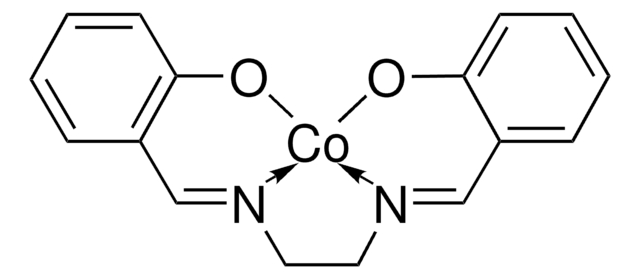714836
Iodine monochloride solution
1 M in acetic acid
Synonym(s):
Chloroiodide solution, Wijs solution
Sign Into View Organizational & Contract Pricing
All Photos(1)
About This Item
Linear Formula:
ICl
CAS Number:
Molecular Weight:
162.36
Beilstein:
3587194
MDL number:
UNSPSC Code:
12352101
PubChem Substance ID:
NACRES:
NA.22
Recommended Products
form
solution
concentration
1 M in acetic acid
density
1.143 g/mL at 25 °C
SMILES string
ClI
InChI
1S/ClI/c1-2
InChI key
QZRGKCOWNLSUDK-UHFFFAOYSA-N
Looking for similar products? Visit Product Comparison Guide
General description
Iodine monochloride is an inorganic reagent used in the iodination and chloroiodination of aromatic and unsaturated compounds, respectively. It is also used to cleave carbon-metal bonds.
Application
Iodine monochloride can be used:
- As a reagent in the preparation of α-iodo β-ketosulfones from β-ketosulfones.
- In the synthesis of 3-(4-bromo-2-methylphenyl)-4-iodosydnone, which is further used to prepare substituted pyrazoles.
Signal Word
Danger
Hazard Statements
Precautionary Statements
Hazard Classifications
Eye Dam. 1 - Flam. Liq. 3 - Skin Corr. 1B
Storage Class Code
3 - Flammable liquids
WGK
WGK 3
Flash Point(F)
105.1 °F
Flash Point(C)
40.6 °C
Certificates of Analysis (COA)
Search for Certificates of Analysis (COA) by entering the products Lot/Batch Number. Lot and Batch Numbers can be found on a product’s label following the words ‘Lot’ or ‘Batch’.
Already Own This Product?
Find documentation for the products that you have recently purchased in the Document Library.
Customers Also Viewed
Synthesis of α-iodo β-ketosulfones and α-iodo methylsulfones using iodine monochloride
Suryakiran N, et al.
Tetrahedron Letters, 47(26), 4319-4323 (2006)
Iodine monochloride
e-EROS Encyclopedia of Reagents for Organic Synthesis. (2013)
Steric effects on the sydnones reactivity. New sydnones and pyrazoles
Dumitracscu F, et al.
ARKIVOC (Gainesville, FL, United States), 2(26), 80-86 (2002)
Ru-Jin Huang et al.
Analytical chemistry, 81(5), 1777-1783 (2009-02-10)
This study concerns the development of a coupled diffusion denuder system capable of separating and quantifying gaseous molecular iodine (I(2)) and two other highly reactive iodine species, ICl and HOI, which are collectively named activated iodine compounds (AIC). Both I(2)
K R Siebenlist et al.
Biochemistry, 39(46), 14171-14175 (2000-11-23)
There are conflicting ideas regarding the location of the carboxyl-terminal regions of cross-linked gamma-chain dimers in double-stranded fibrin fibrils. Some investigators believe that the chains are always oriented longitudinally along each fibril strand and traverse the contacting ends of abutting
Our team of scientists has experience in all areas of research including Life Science, Material Science, Chemical Synthesis, Chromatography, Analytical and many others.
Contact Technical Service











